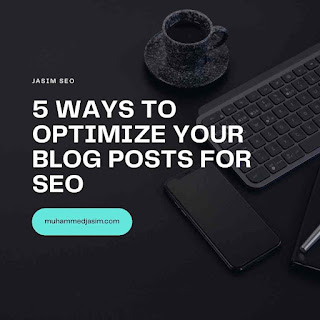Do you know why companies optimize their blog posts? To understand why you also need to understand the importance of SEO.
The top list displayed on the first page of search results is limited. You want your website to appear when a potential customer enters a keyword or asks about your company's services. One way to get better results on search engine result pages is to bid on keywords and search queries through paid search. However, it takes a lot more to earn a prominent place in the SERPs. This is where SEO comes into play.
SEO or Search Engine Optimization refers to driving traffic to your website through organic search engine results. When a user enters a search query, search engines such as Google and Bing fetch information from various websites and rank the results based on those that are most relevant to the user.
Blog content may not be the first thing that comes to mind when you think of a successful website. Including a regularly updated blog on your website is one of the best ways to improve your search engine results. Using keywords and other SEO tactics in your blog posts can increase your website's relevance in the SERPs.
Here are five tactics that can help you optimize your blog posts for SEO.
1. Do keyword research to optimize your blog posts.
First and foremost, you should use the most relevant keywords when optimizing your blog posts. That's why it's important to do research. You might think you know what your target audience is searching for, but keyword research can ensure that you're using the most popular terms in your industry or service.
If you have an AdWords account, you can use Keyword Planner to understand keyword trends and find the ones that generate the most traffic
Don't have an AdWords account? No problem. Free to set up.
2. Incorporate Keywords in the Right Places
Once you have selected relevant and valuable keywords, you need to incorporate them in a way that will have the greatest impact when optimizing your blog posts.
- Title
- URL
- The first sentence (or at least the first paragraph)
- Meta description
- Image alt text (rename images to make them more relevant and descriptive)
Please do not overdo the content of the post. "Keyword stuffing" or including as many keywords as possible to optimize your search hurts search engine optimization and reduces readability.
You can avoid keyword stuffing penalties when optimizing your blog posts by strategically placing your keyword (and one or two of its variations) in a few places throughout your post.
3. Install the SEO Plugin
Make sure you're following blog post optimization best practices. Optimizing your posts is easy with the Yoast SEO plugin for WordPress. This plugin shows you where your posts are performing well and where your SEO and readability are lacking, giving you a red, yellow, or green light.
Once you've adjusted your post based on the plugin's insights and recommendations, you'll get the green light. Easy-to-understand suggestions ensure search engine optimization before you even start planning. This means your post is optimized and ready to go.
4. Include Links
Improve search engine optimization by including internal and external links when optimizing your blog posts. Internal links help Google find relevant topics on your site, understand your site structure, and create a hierarchy of your most important pages.
If your blog links to or gets information from another website, include an external link to this page. In addition to showing Google that you respect the source, you may be able to get links to Google content.
5. Share on Social Media
I wrote a blog. All I need now is someone to read it. One of the best ways to make sure your blog gets seen is by sharing it on social platforms. Share your latest blog posts on Facebook, Twitter, LinkedIn, and other social pages to increase awareness and reach of your blog.
You've learned how to optimize your blog posts. Following these steps can help you get better search engine results, but perfecting the art of SEO and getting better results in SERPs takes time, dedication, and the right resources. Need help with her SEO and paid search for her business? target market can help you with this. Visit our website and contact our team today to get started.

Comments
Post a Comment